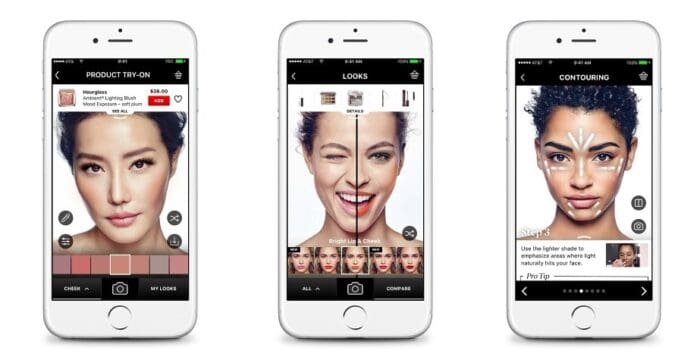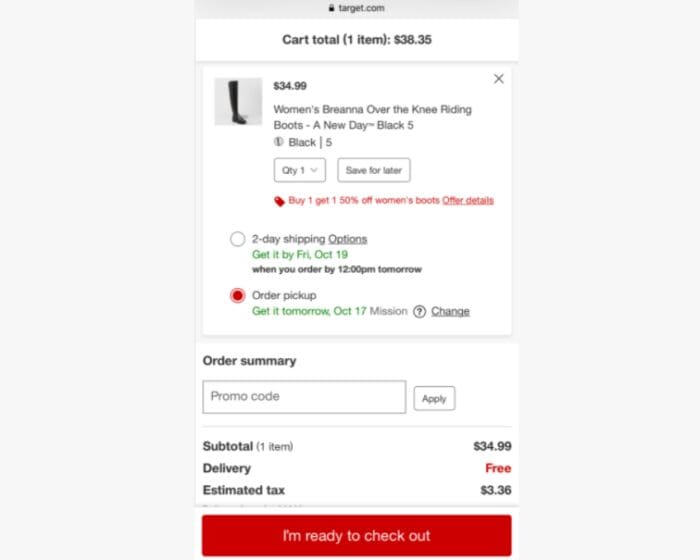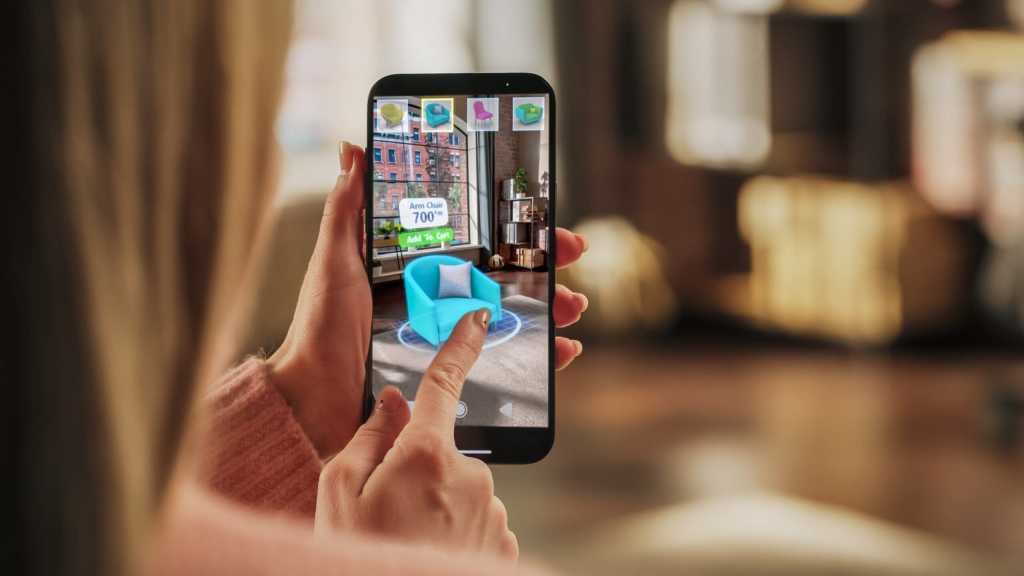In a world of endless options, customers expect to be able to shop how they want – and through the channels they prefer. Subsequently, successful brands are not only establishing both online and offline shopping channels, but also striving to connect the two experiences to make the customer journey as seamless and cohesive as possible.
The result: the hybrid retail model.
In this guide, we’ll explore what hybrid retail is, share real-life examples of leading brands leveraging the hybrid retail model, and walk through how to set up a hybrid store and successfully integrate your online and offline channels.
What is hybrid retail?
Hybrid retail is the combination of ecommerce selling with traditional offline retail selling. It is a multichannel commerce model that seamlessly integrates ecommerce shopping with offline, in-store buying experiences, and ensures that customers have multiple ways to engage with the business.
Hybrid retail ensures that customers can enjoy a cohesive and uninterrupted experience that’s tailored to their needs, regardless of the channel they choose to engage with. For example, a shopper may find a clothing item while online shopping, but hesitate to buy it without trying it on. If the business has a hybrid retail model, that shopper can visit a retail location, try the item on, and complete their purchase in-person.
Adapting to consumer expectations in hybrid retail
Consumers today have a wealth of ways to shop. With a vast selection of online retail platforms and traditional brick-and-mortar stores to choose from, they can simply choose the option that’s most convenient to them.
A hybrid omnichannel retail approach enables businesses to cater to customers’ preferences and satisfy their expectations. Insights from a VoC program can help retailers understand customer needs across online and offline channels, ensuring that every interaction is tailored and consistent.
For instance, brands using the hybrid retail approach may:
- Offer a “buy online, pick up in store” (BOPIS) delivery option, where customers can order products online and arrange for pickup in store at a later time
- Direct customers to purchase an item online if it isn’t in stock at the showroom where they’re shopping
- Use augmented reality to enhance the in-store experience, enabling customers to see how certain products would look on them or in their homes.
- Leverage insights from online customer behavior and implement them to deliver a personalized experience even as they shop offline (e.g., in-store assistants may use the customer’s information and online buying history to provide size and product recommendations)
Enhancing the user’s experience in these ways helps you deliver on the customers’ omnichannel expectations, boosting customer satisfaction and increasing conversion for your business.
An important thing to keep in mind with regards to improving user experience is product localization . If your store operates in multiple regions, such as different cities and countries, you have to localize the products for the customers in those areas. This will help them learn about the products easily.
Successful hybrid retail and ecommerce examples and models
To better understand the different ways to deliver an omnichannel experience, let’s look at a few brands that have successfully implemented a hybrid approach.
Sephora’s high-tech personalization and flexibility

Sephora is a standout example of hybrid retail success, particularly for its use of technology to enhance customer experience both on- and offline.
For instance, the beauty retailer introduced Sephora Virtual Artist to give online shoppers a way to try on different shades of lipstick and eyeshadow, false lashes, and other makeup products virtually. With this tool, Sephora shoppers are no longer forced to test products in-store; instead, they can be confident in their product selections without visiting a retail location and make their purchases online from the comfort of home.
Sephora also supports their online shoppers by offering same-day delivery and flexible pickup options such as in-store and curbside pickup.
Nike’s interactive retail experience

Nike completely revolutionized the in-store shopping experience when they started introducing basketball courts and treadmills to their flagship stores.
The sports brand’s 55,000-square foot space in SoHo featured five stories full of interactive spaces, such as a basketball half-court with digital video screens and adjustable hoops. It also had an enclosed soccer trial area and a treadmill with a jumbotron to simulate outdoor runs.
This approach allows customers to directly engage with the products in a dynamic environment, enhancing the physical shopping experience and integrating it seamlessly with their online presence.
Best Buy’s omnichannel strategy

Best Buy offers a robust example of hybrid retailing by enabling customers to check online inventory and pick up in-store. This is possible through a robust inventory management system that keeps track of physical inventory count and integrates the data with their online stores for real-time inventory visibility.
This model not only streamlines the shopping experience but also leverages their physical stores as fulfillment hubs to reduce delivery times and costs.
Target’s integrated inventory management

Target has successfully implemented a hybrid model by integrating their inventory across online and physical stores through effective multichannel inventory management. This approach allows for real-time inventory updates, which supports various shopping options like BOPIS (Buy Online, Pick-up In-Store) and helps maintain customer satisfaction through accurate stock information.
How to set up a hybrid store with ShipBob
Once you decide to implement a hybrid retail model, it can be difficult to know where to start. Here are some steps for getting set up, and some best practices for managing your hybrid retail logistics and operations.
Integrate your online and offline sales channels
The key to nailing the hybrid approach to retail is properly integrating your online and offline sales channels. This ensures that sales from your ecommerce store, online marketplaces, and retail stores are all accounted for, and makes customer data easily accessible at every touchpoint.
While it’s possible to integrate your channels through an elaborate network of services and tools, it’s easier by far to leverage a single, intuitive platform. That way, all your orders are processed in the same way by the same provider, simplifying your life and maintaining consistency between channels.
ShipBob’s platform, for example, integrates with major ecommerce platforms, marketplaces, and dozens of retail partners to make omnichannel order management a breeze. Using ShipBob’s technology, your orders from every channel are passed and directly to ShipBob’s dashboard, where you can view, edit, and track them as they are fulfilled and shipped to the end customer. This gives you a single source of truth across all your channels, and lets you manage all your orders in one place.
Optimize your inventory for both worlds
Maintaining inventory visibility across your online and offline channels is essential for effective hybrid retail. This allows you to stay on top of your inventory levels, avoid overselling stock on a single channel, prevent unexpected stockouts, and time replenishment correctly.
ShipBob’s inventory management software provides you with real-time inventory tracking so you can see your inventory levels across all your sales channels. This level of visibility enables you to maintain optimal stock levels, so you can meet customer demand and avoid accidental stockouts while preventing overstocking that could take up valuable space in your warehouses and retail stores.

Enhance the hybrid shopping experience using data
You won’t know how your different channels are operating or performing without data, so a successful hybrid approach is built on tracking key metrics across your orders, inventory, and fulfillment.
ShipBob’s advanced analytics provide you with insights into consumer behavior across your digital and physical storefronts. You can tap into your top-selling locations and identify your most popular SKUs to guide your stocking decisions, and even calculate the most strategic split of inventory across ShipBob’s dozens of fulfillment centers to meet demand effectively while reducing shipping costs and times.

Leverage ShipBob’s fulfillment solutions to support hybrid retail operations
Hybrid retail success is just as much about fulfilling orders efficiently as it is about maintaining a multichannel presence. You must not only quickly fulfill online orders to meet customer expectations, but also navigate retail distribution and dropshipping to effectively expand into retail stores – all while maintaining a consistent, branded experience no matter where you sell.
With ShipBob’s DTC and B2B fulfillment solutions, you can optimize your omnichannel fulfillment operations to support hybrid retail effectively. Whether you’re selling to individual customers or a retail partner, our expert team receives and stores your inventory at one or multiple of our dozens of fulfillment centers across globe, but we will take care of picking, packing, and shipping orders for you.
ShipBob integrates with dozens of major retailers (including Target, Ulta, Macy’s, and more) and maintains EDI-compliance with each retailer’s unique requirements, so your B2B orders are fulfilled as smoothly as your DTC orders are.
Craft a customer-centric approach to hybrid retail
ShipBob’s proprietary software and best-in-class fulfillment let you offer the flexible shipping and multi-channel fulfillment solutions to meet and beat customers’ expectations.
You can provide the 2-day shipping customers expect leveraging ShipBob’s 2-Day Express Shipping option, or distribute inventory across ShipBob’s network to make delivery both quick and affordable for all your US customers. You can even place inventory in and fulfill orders from ShiBob’s fulfillment centers in the UK, mainland Europe, Australia, and Canada to speed up delivery for international customers while saving money and bypassing cross-border complexities.
ShipBob also lets you add special touches like gift notes, marketing inserts, and custom packaging to orders to create an unforgettable unboxing experience for customers, so they’ll be excited to return to your website – or retail store – soon.
For more information on how ShipBob can help your brand master hybrid retail fulfillment, click the button below to get in touch with an expert.
Hybrid retail FAQs
Below are answers to the most commonly asked questions about hybrid retail.
How can technology enhance a hybrid retail strategy?
Technology can provide visibility into inventory across all your online and offline sales channels, maintaining a single source of truth to optimize your inventory management. This allows you to maintain optimal stock levels and make strategic stocking decisions.
What are the benefits of adopting a hybrid retail model?
A hybrid retail model enables you to expand your brand’s presence and reach more people, which will help you boost sales. Moreover, it enhances the customer experience to earn their loyalty.
How does a hybrid retail strategy enhance customer engagement?
A hybrid retail strategy enhances customer engagement by providing multiple ways for customers to interact with your business. Customers can enjoy a cohesive, seamless experience that’s tailored to their needs, regardless of which channel they use.




